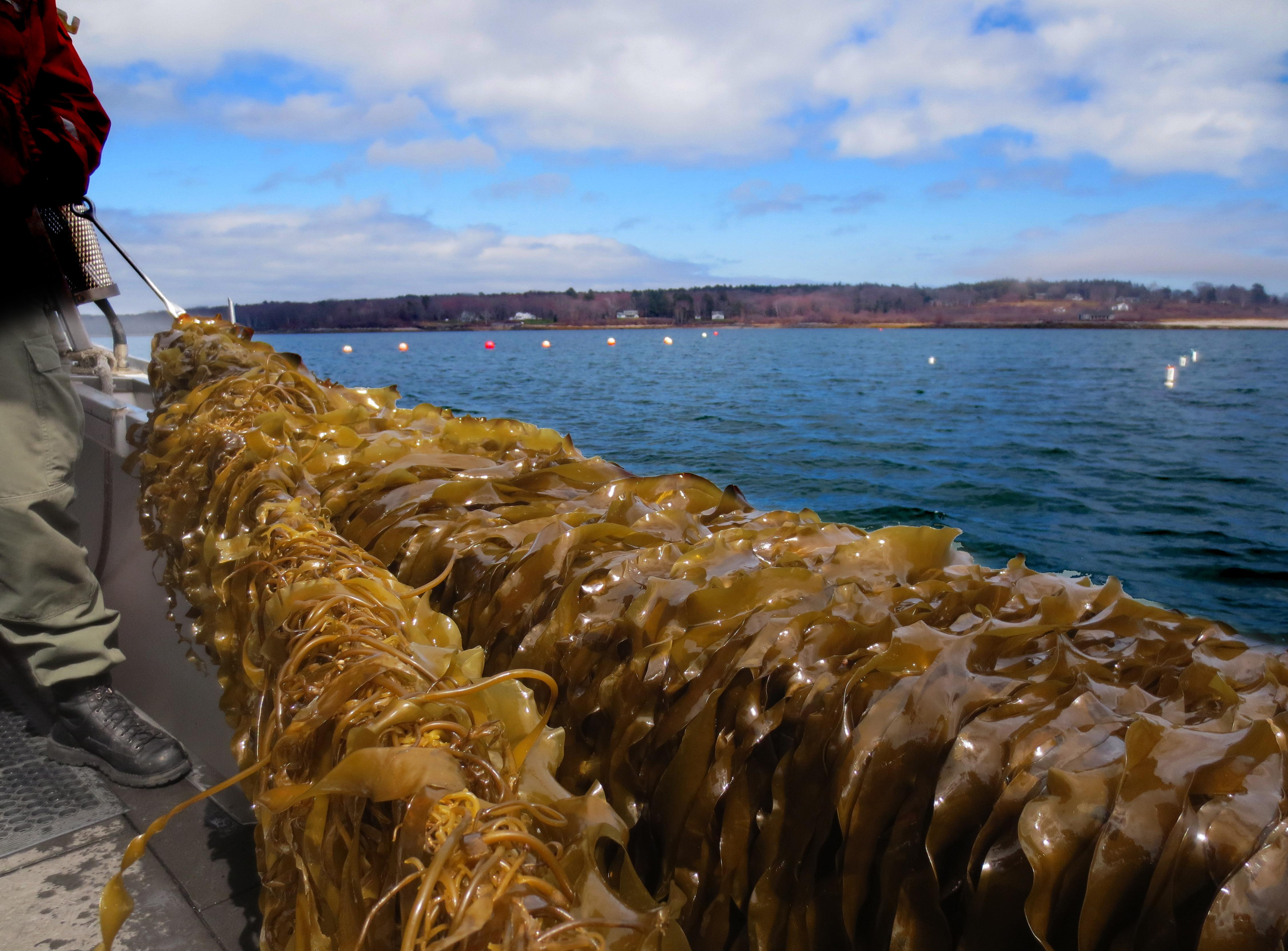- Home
- News
- Recent News
- Seaweed research
Seaweed research provides new look at coastal pollution and impacts
Findings include high level of some heavy metals in wild and farmed kelp, but no immediate hazards to consumers

Commercial seaweed farming is an emerging industry in the Northeast U.S. and elsewhere, garnering interest for its potential to bring a new domestic market to coastal communities by providing a healthy and sustainable food source. U.S. seaweed farmers and regulators are working together to identify areas to grow crops like sugar kelp, but are challenged by a lack of seaweed-specific standards in the U.S. A new paper by researchers from the University of Massachusetts Boston and Dartmouth College explores how water pollution might impact the health and safety of sugar kelp, and brings some much-needed data to the table.
The team found that some wild and farmed sugar kelps contain notably high levels of certain heavy metals, but emphasized that the levels do not pose any immediate threat to consumers who enjoy U.S.-produced seaweed products. In fact, they say that the data points to a need for the U.S. to develop consistent, evidence-based standards around seaweed safety, one that considers the way sugar kelp is typically processed for consumption (i.e., blanching). The research also sheds light on the ecology of sugar kelp, and will help scientists continue to explore the marine environment in which sugar kelp grows.
“We do not believe that our results should alarm consumers of domestic seaweed products,” explained Brianna Shaughnessy, Ph.D. who led this research as part of her doctoral dissertation at the University of Massachusetts Boston’s School for the Environment. “Rather, to put our findings in context, a person would need to eat 2,000 grams (4.5 pounds) of raw seaweed every day for 70 years to reach exposure levels of concern for cadmium, or 10,000 grams (22 pounds) every day for 70 years to reach exposure levels of concern for arsenic.” Another finding was that cadmium and arsenic were concentrated at the base of kelp blades, suggesting that — even at sites where higher levels of metals were detected — only small sections of the kelp blades have these higher concentrations.
For this paper, researchers analyzed wild sugar kelp samples from sites with and without a history of coastal pollution in Massachusetts. They then compared them to samples from nearby sugar kelp farms. At all study sites — farmed, with a history of coastal pollution, or without — researchers found that parts of sugar kelp blades contained up to three times the maximum levels for contaminants set by the European Union’s standards for cadmium and total arsenic. Facing an absence of relevant U.S. standards, the researchers used Proposition 65 Safe Harbor Levels to further contextualize their results in terms of consumption.
Prior to this research, seaweed farmers had little information about heavy metals in local waters and potential impacts on kelps. In Maine — the state that comprises a majority of domestic seaweed farmers and suppliers — the industry is testing its own samples to ensure safety in their products. Still, farmers in other states are seeking help to further ensure quality in their products. “We’re grateful to the farmers that worked with us to provide samples,” said Shaughnessy. “They are experts in their field and strive to cultivate the best products possible. Their on-the-water knowledge and collaboration is an important aspect of expanding the U.S. aquaculture industry.”
Knowing if sugar kelp retains heavy metals is not only relevant to the commercial seaweed community, but also to ecologists seeking to explore kelp’s potential to break down environmental contaminants like heavy metals to clean up polluted sites. Both ecologists and farmers were also wondering if farmed kelps might have lower heavy metal concentrations than wild kelps, as the kelp blades are younger and most farms are sited to avoid polluted waters.
A lack of data and unified industry standards regarding heavy metals concentrations remains an area of concern across sectors. “Marine aquaculture is an economic engine that provides thousands of jobs and sustains businesses, economies and communities throughout the nation,” said Stephanie Otts, director of the National Sea Grant Law Center. “As commercial markets for seaweeds expand, it’s important that ocean farmers work together with researchers, health experts, and regulators to fill knowledge gaps about their products. We want to know more about the benefits and challenges associated with farmed seaweeds — that includes heavy metals that can be naturally contained in their crops and products. Transparency and careful thought about food safety is an absolute necessity to build and maintain consumer trust as the industry grows.”
This new research is a step toward the collaborative effort to develop regulatory guidance that is more specific to seaweeds, and to help fill knowledge gaps within the growing science of sustainable food systems. Addressing these gaps will foster trust with consumers and move the U.S. commercial seaweed industry forward.
